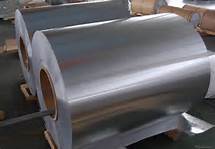Nonferrous Metal Foundry Products Manufacturing
 Aluminum Rolls |
New York, NY--December 24, 2013: The Nonferrous Metal Foundry Products Manufacturing industry relies heavily on demand from the industrial sector, especially automobile manufacturing. Following the subprime mortgage crisis, banks increasingly restricted consumers' access to credit. At the same time, escalating unemployment dramatically reduced disposable income levels. “Demand for automobiles took a dive because consumers were unable to take out a loan or pay out of pocket for a new car,” according to IBISWorld Industry Analyst Leah Goddard. As automakers' revenue plunged 36.5% in 2009, demand for nonferrous metal foundry products fell. In the five years to 2013, industry revenue is projected to decline at an annualized rate of 2.3%, despite substantial gains in 2010 and 2011 as demand resurfaced with improving economic conditions and rising industrial activity. As automakers expand production in 2013, industry revenue is expected to increase 1.3% to $12.5 billion.
In addition to downstream demand, the industry is greatly impacted by changes in nonferrous metal prices because foundries purchase, process and resell these metals. Nonferrous metals, such as aluminum, copper and titanium, are distinguished from ferrous metals, such as steel, in that they do not contain iron. Industry players can often pass on higher input costs to customers, but rising prices during a period of low demand hurt industry revenue and profit. In 2008, prices rose because of increased international demand for metals, but decreased domestic demand forced foundries to lower selling prices to attract customers. “The price of aluminum and other nonferrous metals have been highly volatile, and many foundries have been unable to deal with fluctuating costs and lower revenue,” says Goddard. Narrow or negative profit margins have caused companies to exit the industry or merge with larger players. In the five years to 2013, the number of enterprises is expected to decrease at an average annual rate of 3.7% to 957 foundries.
The industry will continue to globalize and consolidate to meet the mounting needs of its customers. In the five years to 2018, growth in downstream demand will support higher prices for nonferrous metals, benefiting industry revenue and profit. Furthermore, the automotive industry is increasingly using lighter nonferrous metals, such as aluminum and magnesium, to reduce motor vehicle weight.
For more information, visit IBISWorld’s Nonferrous Metal Foundry Products Manufacturing in the US industry report page.


